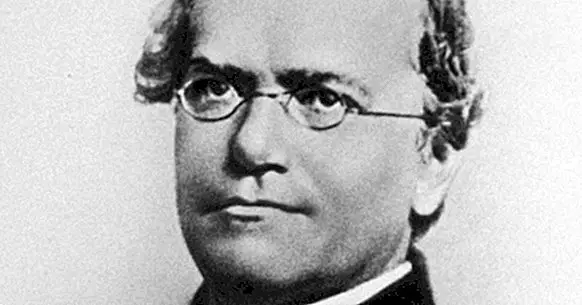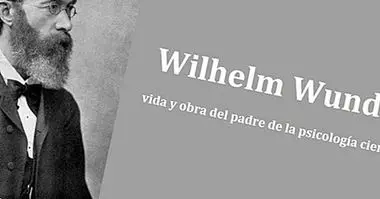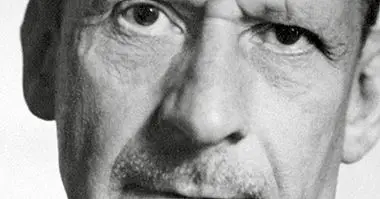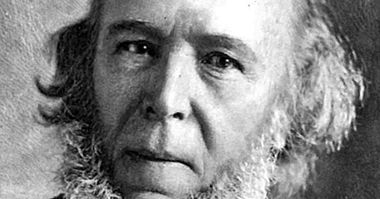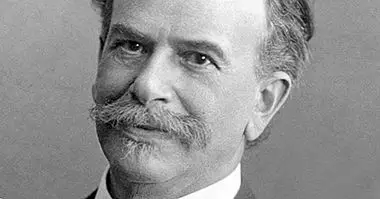Gregor Mendel: biography of the father of modern genetics
Gregor Mendel (1843-1822) was a botanist with training in philosophy, physics and mathematics, who is credited with having discovered the mathematical basis of genetic sciences, which is now called "Mendelism".
Then we will see the biography of Gregor Mendel as well as its main contributions to modern genetics.
- Related article: "The 10 branches of Biology: its objectives and characteristics"
Biography of Gregor Mendel, father of genetics
Gregor Johann Mendel was born on July 20, 1822, in the rural community Heinzendorf bei Odrau, in the former Austrian Empire, now Czech Republic. He was the son of peasants with few economic resources, so Mendel spent his childhood working as a cattle rancher, a question that later helped him to complete higher education studies.
He studied at the philosophical institute of Olomouc, where showed great skills for physics and mathematics . Despite his family's desire to continue on the family farm, Gregor Mendel began his theological training since 1843. This was influenced because his academic skills were soon recognized by the local priest. In 1847 he was ordained a priest and in 1851 he was sent to the University of Vienna to continue his studies.
There he was trained under the accompaniment of the Austrian physicist Christian Doppler and the physicist-mathematician Andreas von Ettingshausen. Later he studied the anatomy and physiology of plants, and specialized in the use of a microscope under the tutorship of the botanist Franz Unger, who was an expert in cellular theory and supported the development of a pre-Darwinian theory of evolution, which had an important influence on Mendel's thesis.
Despite having lived in the same era as Darwin and having read some of his texts, there is no evidence that there was direct exchange between Mendel and Darwin and their teachers.
Mendel was seen very soon motivated by the investigation of nature , which led him to the study of different plant species, but also to the area of meteorology and different theories of evolution. Among other things, he discovered that different varieties of peas have intrinsic particular properties that, when mixed, eventually produce new plant species as independent units.
His studies laid the foundations for the discovery of the hereditary activity of genes, chromosomes and cell division , which were later known as Mendel's laws. Gregor Mendel died on January 6, 1884 in Austria-Hungary, because of a kidney disease. He was not aware of having discovered a fundamental part of the development of classical genetics, since his knowledge was "rediscovered" years later by Dutch scientists.
Mendel laws of inheritance
Mendel's laws of inheritance, also known as Mendelian inheritance, derive from his investigations, conducted between 1856 and 1863. This botanist had cultivated about 28,000 pea plants , which led him to formulate two generalizations about how genetic information is transmitted based on the expression of the genotype.
His text "Experiments on Plant Hybridization" was rediscovered by Hugo de Vries, Carl Correns and Erich von Tschermak, who had experimented and reached the same conclusions as Mendel. In 1900, another scientist, named Hugo Vires, promoted the recognition of Mendel's laws, while coining the words "genetics", "gene" and "allele". In summary we will see below what each one of these laws consists of.
- Maybe you're interested: "The 3 Mendel laws and the peas: this is what they teach us"
1. Mendel's first law
It is also known as the law of segregation of independent characters, law of equitable segregation or law of the disjunction of alleles. Describes the random migration of chromosomes during the phase the meiosis is called anaphase I .
What this law proposed was that during the formation of gametes (the reproductive cells of living beings), each of the forms that has the same gene is separated from its pair , to shape the final gamete. Thus, each gamete has one allele for each gene and the downward variation is assured.
- Related article: "Differences between mitosis and meiosis"
2. Mendel's Second Law
This law is also called the Law of independent character transmission. Mendel discovered random alignment of chromosome pairs during the phase of meiosis called metaphase I.
The second law says that different traits of the genes that are in different chromosomes are inherited independently from each other, so that the inheritance pattern of one does not affect that of the others.
The conclusion is that genetic dominance is the result of the expression of the set of genes and hereditary factors that exist in the organism (the genotype), and not so much of its transmission. There is a controversy over whether the latter constitutes a third law, which precedes the others, and is known as the "Uniform Hygiene Law of the First Filial Generation".
Bibliographic references:
- Garrigues, F. (2017). Mendel's Laws: 3 commandments of genetics. Medical genetics blog. Retrieved October 16, 2018. Available at //revistageneticamedica.com/blog/leyes-de-mendel/.
- Gregor Mendel (2013). New World Encyclopedia. Retrieved October 16, 2018. Available at //www.newworldencyclopedia.org/entry/Gregor_Mendel.
- Gregor Mendel (2018). Famous Scientists The Art of Genius. Retrieved October 16, 2018. Available at //www.famousscientists.org/gregor-mendel/.
- Olby, R. (2018). Gregor Mendel. Encyclopaedia Britannica. Retrieved October 16, 2018. Available at //www.britannica.com/biography/Gregor-Mendel.

